
BIOS and Overclocking …
The ASRock B850 Steel Legend came to us with UEFI BIOS V1.00, which we were able to update to version 3.18.AS01 without a CPU thanks to BIOS Flashback. Delivery with an old BIOS version is therefore no longer a problem. Of course, our AMD Ryzen 7 9800X3D processor and the 2x 24GB DDR5 RAM were recognized straight away without any problems. ASRock also uses the light gray Steel Legend color scheme in the UEFI BIOS.
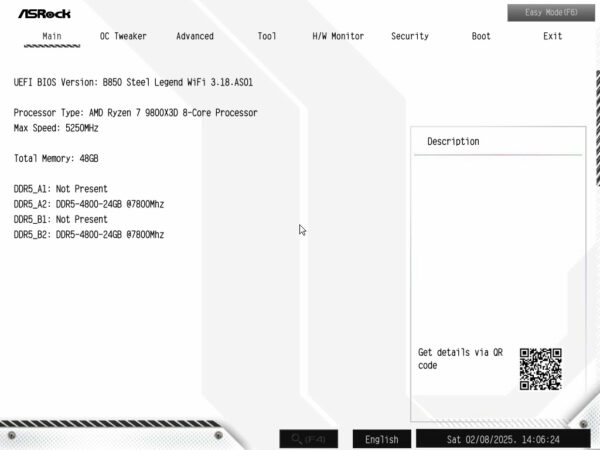
The OC Tweaker menu contains all the new tuning features that AMD has introduced with the latest BIOS updates. For CPUs with 2 CCDs and 3D cache, the new gaming mode deactivates the CCD and its CPU cores that are not connected to the fast 3D-V cache. As a result, you lose speed in applications that are designed to use many cores due to the deactivated CPU cores, but this leads to the best performance in gaming, as only cores with the larger cache are used.
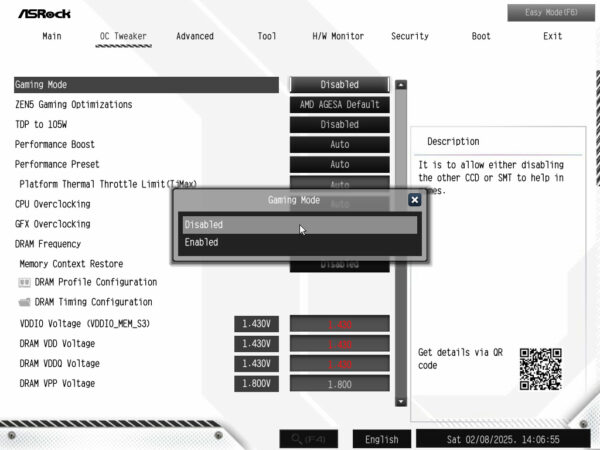
If the Zen5 Gaming Optimizations are activated, the jump prediction introduced with Zen5 / Ryzen 9000 is deactivated and the method known from Zen4 / Ryzen 7000 is used. As a result, AMD promises a reduction in memory latency in certain cases, but the positive effects are manageable and only very rarely measurable/noticeable. We recommend using the new jump prediction method and leaving this setting at AMD AGESA Default.

The new 6- and 8-core Ryzen 5 9600X and Ryzen 7 9700X processors have been reduced from 105W to 65W compared to their predecessors. This leads to slightly reduced performance in some applications compared to their direct predecessors 7600X and 7700X, which was hardly understandable for buyers, as the Ryzen 7600 and Ryzen 7700 already offered processors with 65W performance. In order to raise the performance of the new processors to the level desired by customers, AMD quickly added the option of increasing the performance of the 9600X and 9700X to 105W TDP, which increases the speed of these processors in multi-core applications.
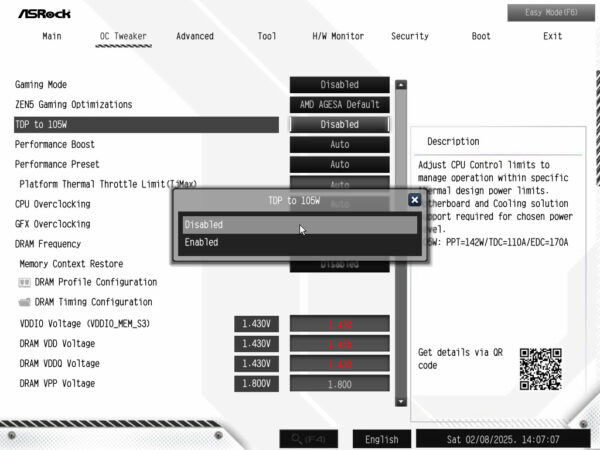
For particularly fast optimization, there are again the useful performance presets, where a specific temperature limit and a negative voltage offset for the CPU can be set with a single click. There is no faster way to tune an AMD Ryzen processor.
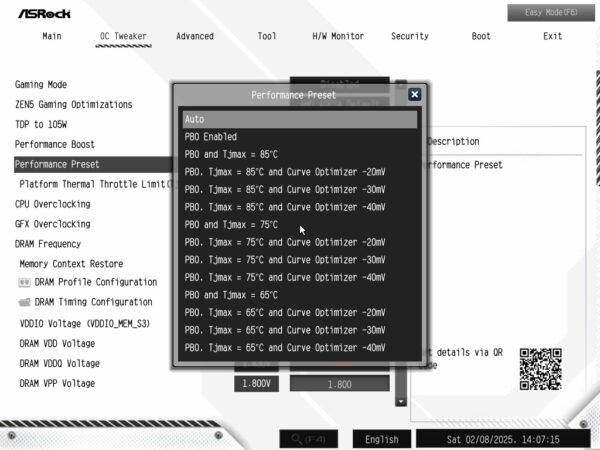
With Precision Boost Overdrive (PBO), the maximum boost clock frequency can be increased by 200 MHz and, thanks to Curve Optimizer, power consumption can be reduced at the same time.
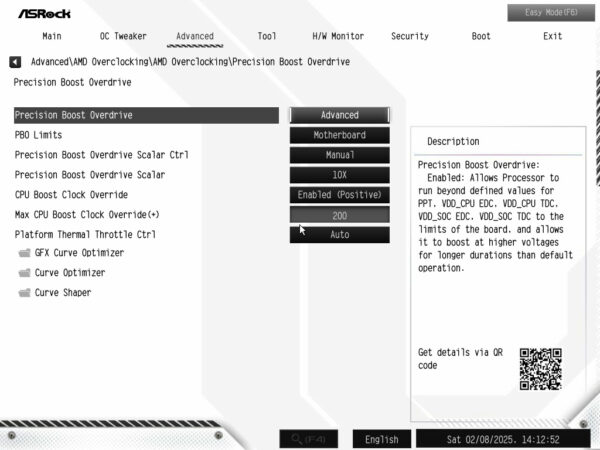
If you prefer to spend more time tuning than gaming, you can let off steam with the new and extremely extensive Curve Shaper and squeeze every last ounce of performance out of your processor.
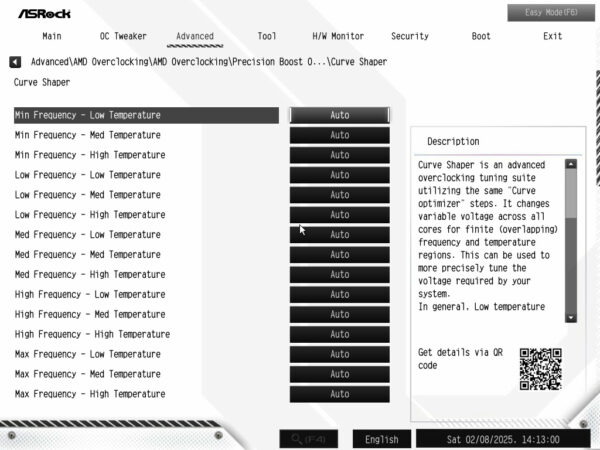
Unfortunately, the B850 Steel Legend does not offer an external clock generator to further increase performance, but only the absolute high-end motherboards offer this feature, so we cannot see this as a negative.
In order to limit heat development and keep the noise level low, each processor can be limited to 65W TDP, which only leads to a slight loss of speed when using 6 or 8-core processors.
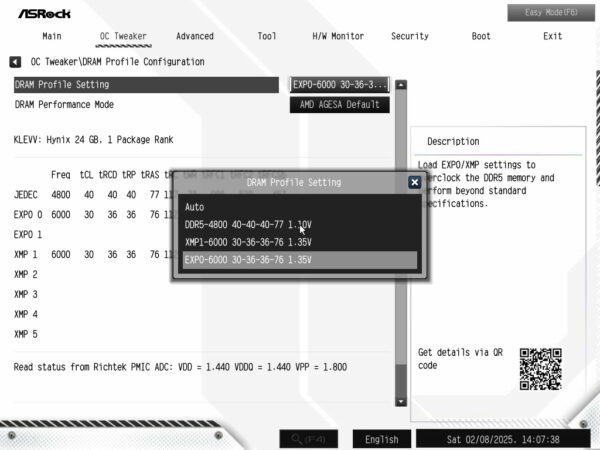
The ASRock B850 Steel Legend is extremely flexible when it comes to RAM, as not only AMD EXPO profiles, but also XMP profiles can be read and used without any problems. So you don’t necessarily have to buy a RAM kit with an EXPO profile.
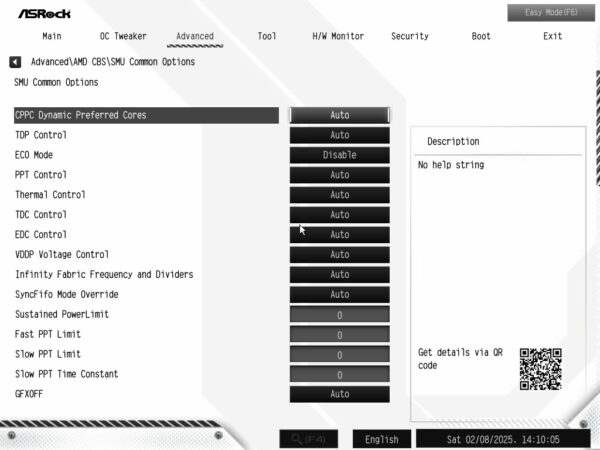
According to the official specification, the maximum memory frequency for Ryzen 9000 is still only 5600MT/s, but with the new 800 chipsets, compatibility for up to 8000MT/s was introduced via EXPO. Unfortunately, mainly the 12- and 16-core processors benefit from such high memory frequencies and neither AMD nor ASRock guarantee that 8000MT/s will ultimately run stably. However, the complete DRAM configuration menu helps to solve stability problems in connection with RAM overclocking.
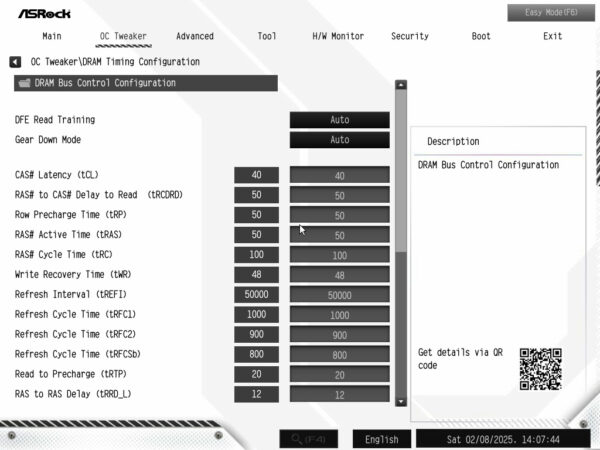
To keep temperatures under control when system power consumption is high, there are extensive options for fan control.
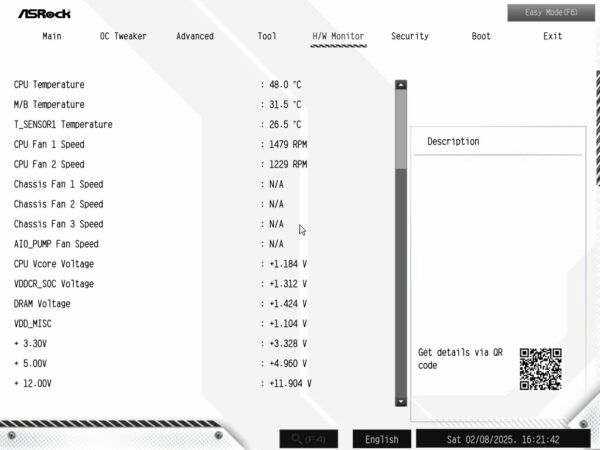
In addition to the classic value entry in the BIOS, Fan-Tastic also provides a graphical interface for fan control.
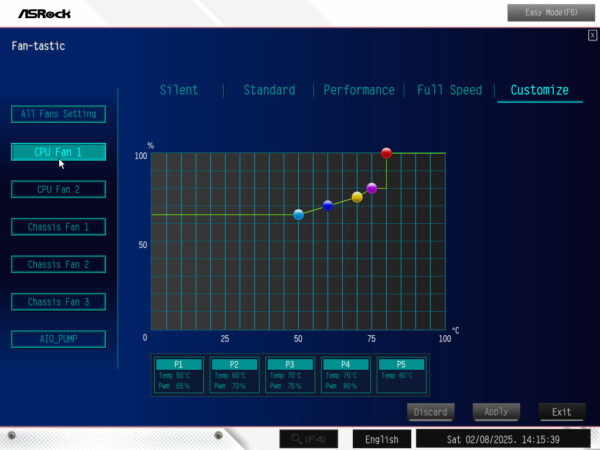
One highlight, however, is the newly added option of controlling 4 out of 6 fan connections using a freely placeable temperature sensor. Especially when gaming, a powerful graphics card often generates significantly more heat in the PC case than the main processor, which often went unnoticed by motherboards of previous generations. By controlling the case fans based on the measured values of the additional temperature sensor, an excessive rise in temperature in the case can be counteracted in a targeted manner.
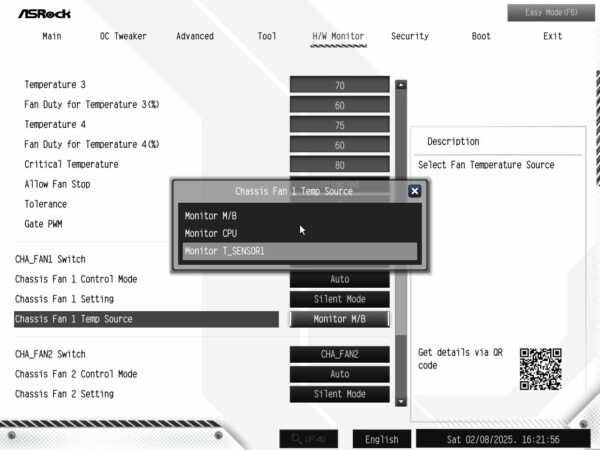
Of course, the B850 Steel Legend also supports PCIe birfurcation on the primary PCIe slot if you prefer to connect 4 high-performance SSDs to a PCIe M.2 adapter card instead of a graphics card. In this way, the ASRock B850 Steel Legend could be equipped with up to 8 PCIe NVMe SSDs (5x Gen5 + 3x Gen4).
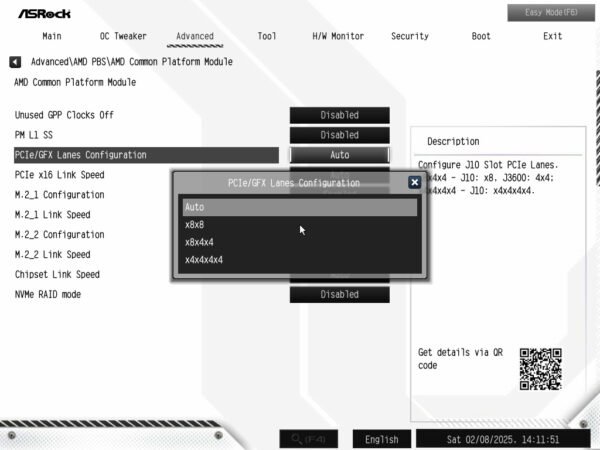
This concludes the BIOS overview, even if there are countless other useful functions that we could list here. However, if you have specific questions, our hard-working users in the OCinside.de forum will be happy to help you at any time.
Overclocking…
Immediately after installation, the processor runs at full performance according to the official AMD specifications and the RAM runs with the JEDEC specification of 4800MT/s, as the maximum 5600MT/s permitted by AMD already falls into the overclocking range.
Benchmark values without overclocking Our Ryzen 7 9800X3D achieved 23167 points in Cinebench R23 without changing the BIOS.
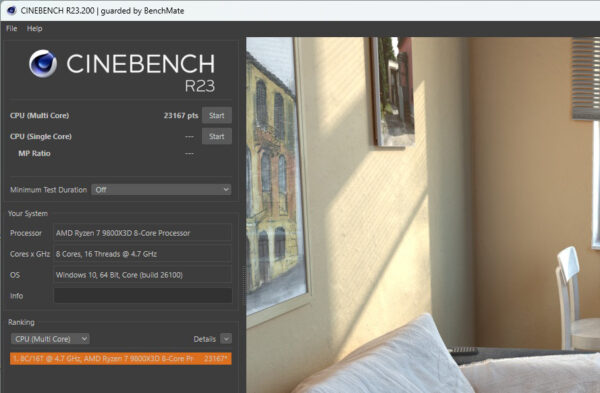
And in Cinebench R15 it is 3636 points.
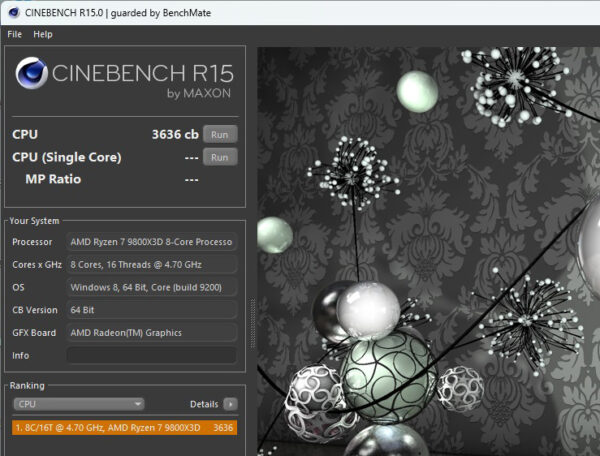
The CPU-Z 2.08 (64bit) benchmark shows 798.5 points single threaded and 8652.7 points multi threaded.

Benchmark values with overclocking The easiest and most effective way to optimize an AMD Ryzen processor is to use Precision Boost Overdrive (PBO) in the BIOS. Our processor can even be operated stably with a large, negative voltage offset of -40 in the Curve Optimizer. Due to the lower voltage, the AMD algorithm allows higher clock frequencies with the same power consumption, which results in increased computing speed in many applications with multi-core usage.
In Cinebench R23, 24154 points are now achieved, which corresponds to a performance increase of 4.3%.

In Cinebench R15, the performance even increases by 6.1% to 3859 points.
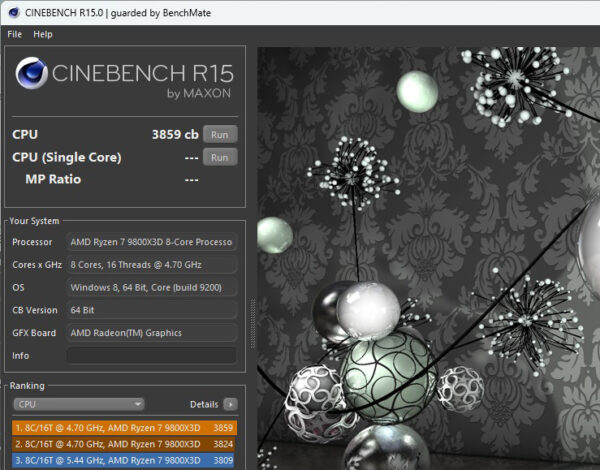
The CPU-Z benchmark increases single threaded by 4.8% to 837.1 points and multi threaded by 3.9% to 8986.9 points.
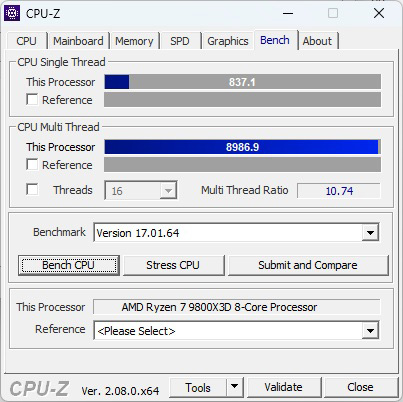
As PBO gets the optimum performance from the processor in all load states, old-fashioned overclocking by specifying a fixed clock frequency with a fixed core voltage hardly makes any sense. Modern applications that use modern instruction sets cause the core temperature to rise quickly with static overclocking, which results in lower performance compared to using PBO. Only the CPU-Z benchmark achieved a better result with a fixed clock of 5450MHz than with PBO. In CPU-Z, we achieved 856.3 and 9154.6 points with classic OC, which means an increase of 2.3% and 1.9% compared to PBO.
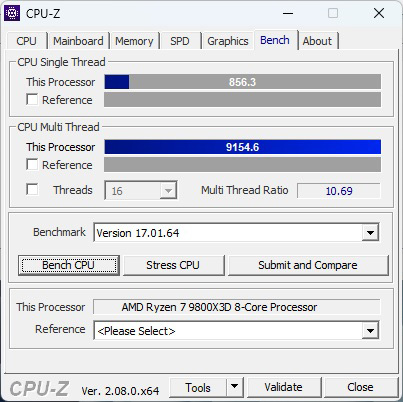
Of course, we also tested how high we could overclock the RAM on the ASRock B850 Steel Legend. We achieved an extremely good 8100MT/s with our 2x24GB (single ranked) KLEVV RAM kit with SK Hynix M-Die chips, which was at least stable enough to run benchmarks, but we wouldn’t classify this value as 100% stable. In combination with an Infinity Fabric clock of 2000MHz, we achieved the following values in the AIDA 64 memory benchmark.
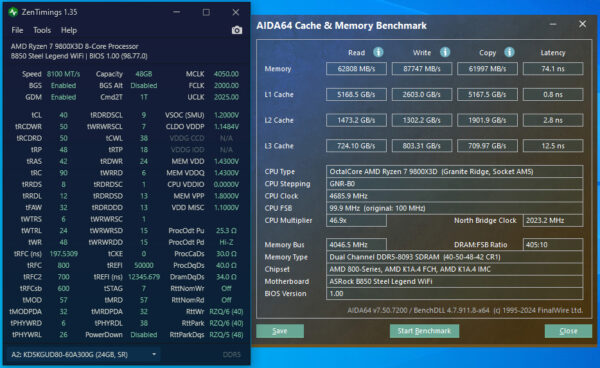
In terms of memory latency, however, the combination of DDR5-8000 with IFC2000 achieves an approx. 5-6ms better result.
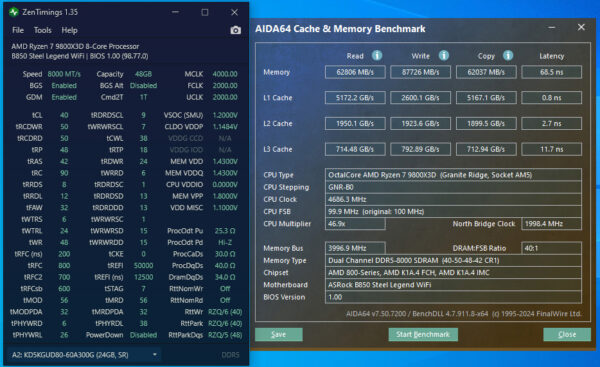
In the end, we achieved the best performance with stable operation at 7600MT/s and optimized RAM timings in combination with IFC 2167MHz. The increased IFC increases the bandwidth from 63GB/s to over 68GB/s and the optimized timings reduced the memory latency to a good 70ns. However, the RAM benchmark values of AIDA64 should only be compared on identical systems, because the new jump prediction of Ryzen 9000, for example, significantly influences the measured values, which is why the values should not be compared with Ryzen 7000 systems.
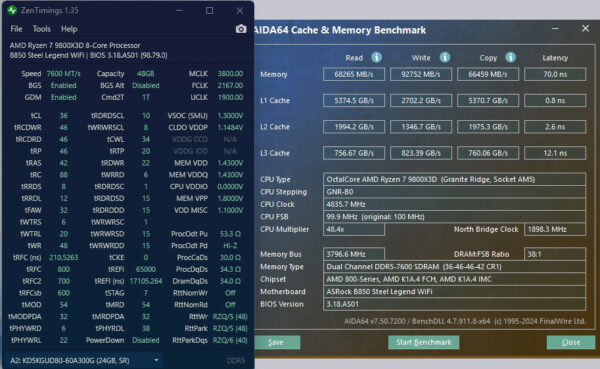
ASRock B850 Steel Legend energy consumption values …

